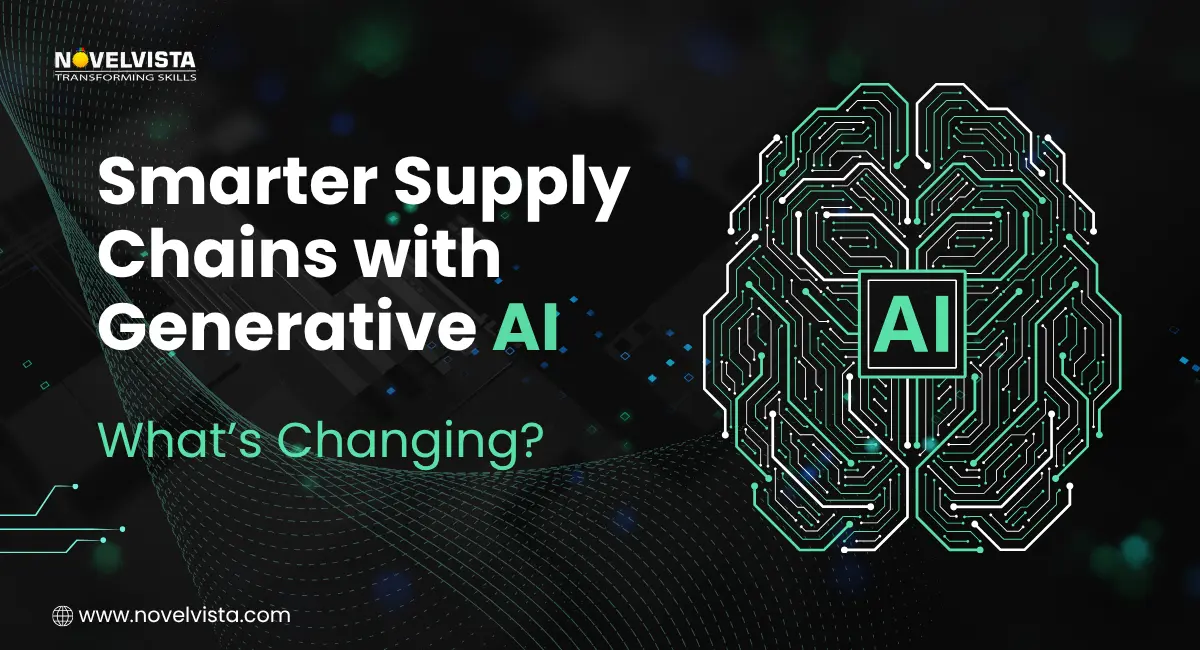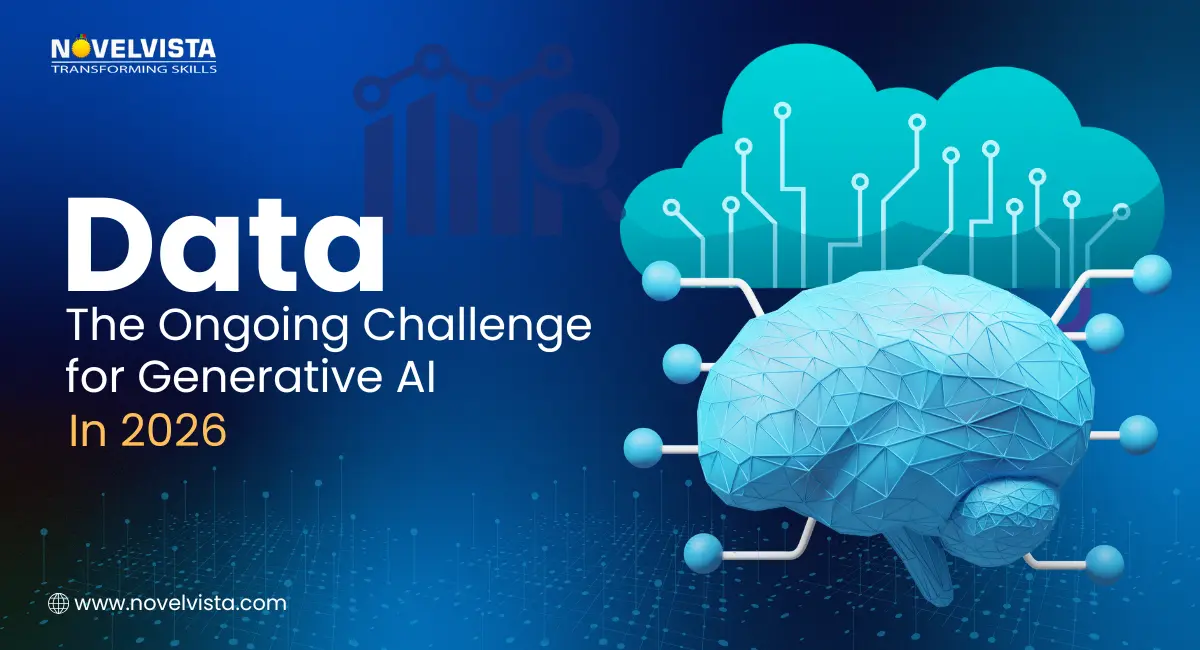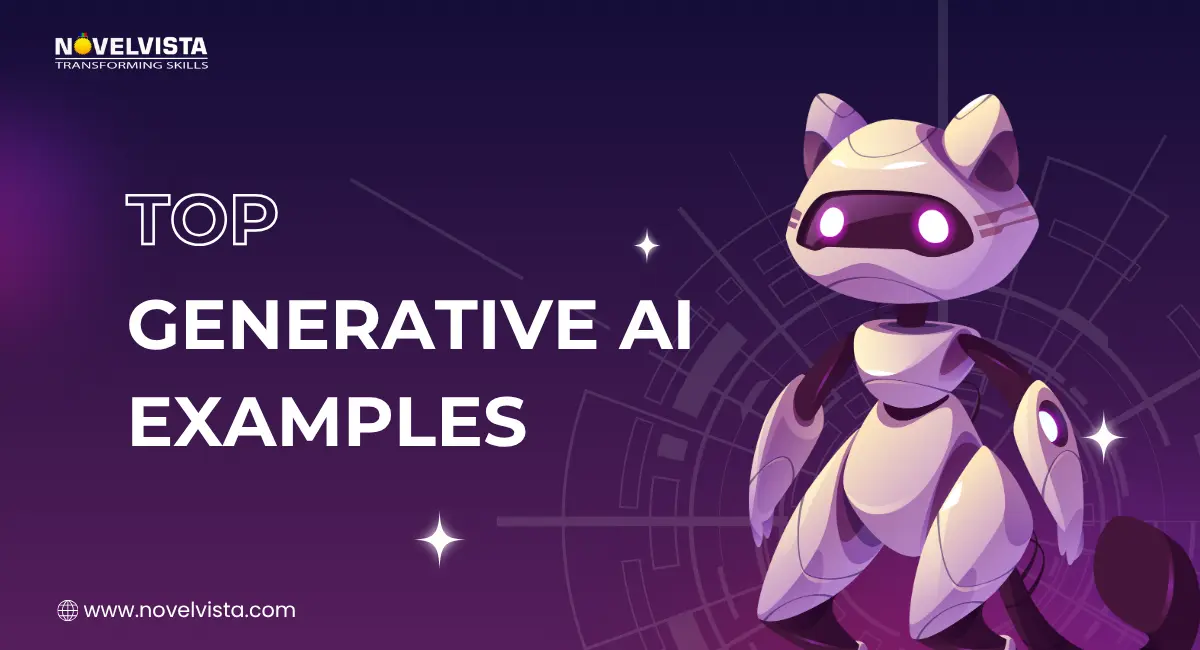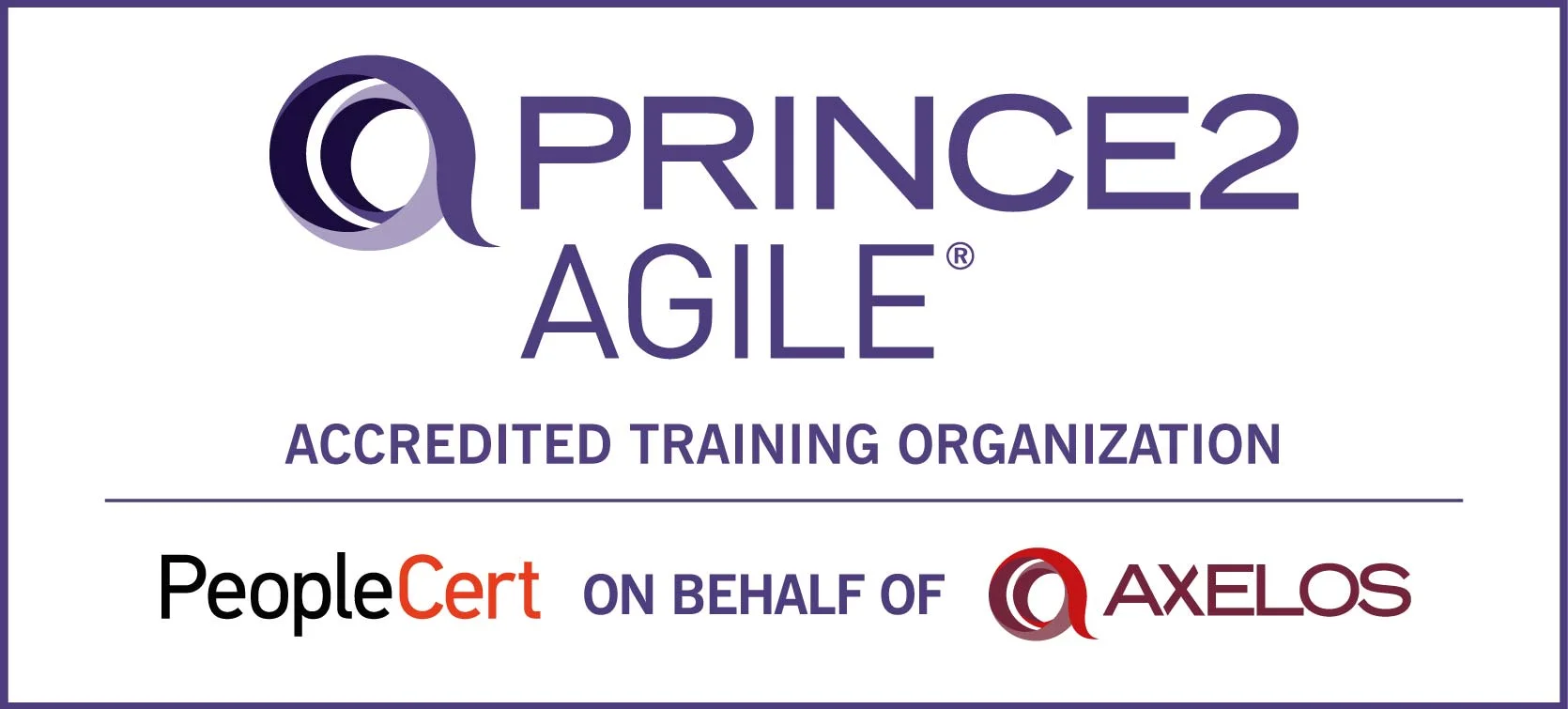Generative AI isn’t just another technological trend—it’s the engine behind one of the biggest shifts in modern business. In the last year alone, organizations using Generative AI tools such as LLMs, copilots, and autonomous agents have reported productivity gains of up to 40% and operational cost reductions of 20–25%. Companies across industries are experimenting with AI, but very few have a clear strategy. The gap between experimentation and real ROI has never been wider.
This is exactly where the generative AI strategist steps in.
If you’ve ever wondered who actually defines the AI roadmap, ensures responsible use, decides which use cases are worth investing in, or guides the organization through adoption, the answer is simple: it’s the generative AI strategist. Before we dive deeper, let's first understand what it actually is.
What Is a Generative AI Strategist?
They are professionals who shape the direction, implementation, and governance of Generative AI within an organization. If you’ve asked yourself what is a generative AI strategist, this definition captures it: they transform AI from a buzzword into a measurable business advantage. While the tools may be technical, the strategist’s real job is to connect AI capability with business value, clearly, responsibly, and profitably.
Where data scientists focus on building models, the role of a generative AI strategist focuses on making AI useful at scale. They operate at the intersection of business, technology, design, and policy, ensuring AI becomes a long-term advantage rather than a short-lived experiment.
Why Organizations Need a Generative AI Strategist
Generative AI is powerful, but without strategic guidance, it can quickly become chaotic. Many organizations rush into AI adoption without understanding risks, data requirements, governance standards, or long-term scalability. As a result, they end up with pilot projects that never scale or AI tools that employees avoid.
They prevents this by ensuring alignment between stakeholders, processes, risks, and outcomes. They help the business avoid costly mistakes, choose the right AI tools, allocate budgets wisely, and build a future-ready ecosystem.
If you’re curious to see how these strategic principles play out in real operations, especially in complex environments like logistics and procurement, you’ll find this deep dive helpful. In our blog Beyond Automation: What Generative AI is Truly Changing in Your Supply Chain Right Now, we unpack how GenAI is reshaping forecasting, planning, inventory decisions, and end-to-end efficiencies across global supply chains.
Key Responsibilities
Below are the core responsibilities of a Gen AI strategist, presented with deeper subtext rather than long lists.
1. Assessing AI Readiness
Before any AI deployment, the strategist studies the organization’s current state—its data health, employee capability, technical ecosystem, and business priorities. This diagnostic evaluation reveals where AI can realistically create value and where foundational work must happen first. In this way, the role of a generative AI strategist begins with understanding reality before recommending innovation.
2. Identifying High-Value Use Cases
They don’t approve every AI idea. They evaluate whether the use case aligns with business goals, whether data is sufficient, what ROI it might generate, and what risks are involved. Their focus is to help leaders shift from “What can AI do?” to “What should AI do for us?”—resulting in a smarter, value-driven roadmap.
3. Creating the AI Roadmap and Implementation Plan
After selecting impactful opportunities, the strategist develops a structured AI roadmap. This includes timelines, technical architecture, governance guardrails, and adoption strategies. More importantly, they translate technical plans into business language. Every phase—pilot, deployment, scale—includes clear success metrics, turning strategy into a practical execution plan.
4. Leading Implementation Across Teams
AI transformation is a cross-functional effort. They work with engineers, data specialists, cybersecurity teams, legal advisors, and business units. Their job is to maintain strategic clarity, resolve conflicts, and ensure that execution reflects business intent. This “bridge role” is one of the most essential responsibilities of a Gen AI strategist.
5. Ensuring Responsible AI and Governance
With regulations tightening globally, responsible AI is no longer optional. The strategist oversees governance frameworks, ethical standards, privacy controls, and regulatory compliance such as GDPR, NIST AI RMF, and ISO 42001. Their efforts ensure that innovation and responsibility go hand-in-hand.
6. Measuring Impact and Scaling AI
Once AI solutions go live, the strategist tracks ROI, adoption, customer experience, and operational improvements. Successful projects are scaled; ineffective ones are restructured or phased out. This ensures AI becomes an enterprise-wide capability, not isolated experiments.
For a real-world look at how smart use-case selection can transform customer experiences, retail offers some of the most powerful examples today. Our guide The Retail Revolution: How Generative AI is Building Your Next Favorite Shopping Experience, explores how GenAI drives hyper-personalization, smarter merchandising, and experience-led growth.
☑️ Practical career strategies
☑️ Step-by-step roadmap to get started
Don’t fall behind — download your free guide now.
Core Skills
It requires a mix of analytical, strategic, and communication skills. Below are key competencies explained with context.
1. Technical Understanding of Generative AI
You don’t need to build models, but you do need to understand how LLMs, prompt engineering, embeddings, and RAG systems work. This knowledge helps the strategist collaborate meaningfully with technical teams and evaluate the feasibility of AI solutions. This forms part of the foundational educational background for an AI strategist.
2. Business Strategy and Problem-Solving
They must think like a business leader. They analyze workflows, identify inefficiencies, understand customer journeys, and connect AI initiatives to measurable outcomes. This business-centric mindset ensures long-term value.
3. Governance, Ethics, and Risk Management
With rising scrutiny around AI decisions, strategists must understand responsible AI frameworks, privacy regulations, and risk mitigation methods. Their governance expertise protects organizations from reputational, ethical, and operational risks.
4. Communication, Influence, and Change Leadership
AI transformation requires cultural adoption. The strategist must communicate benefits clearly, address fears, guide leaders, and simplify complex AI topics for non-technical teams. Their influence shapes organization-wide acceptance.
Healthcare is another domain where AI strategy, governance, and responsible innovation matter immensely. In How Generative AI in Healthcare Is Transforming Diagnosis, Treatment & Innovation, we break down how GenAI is enhancing diagnostics, clinical workflows, patient care, and medical research, while staying aligned with strict compliance frameworks.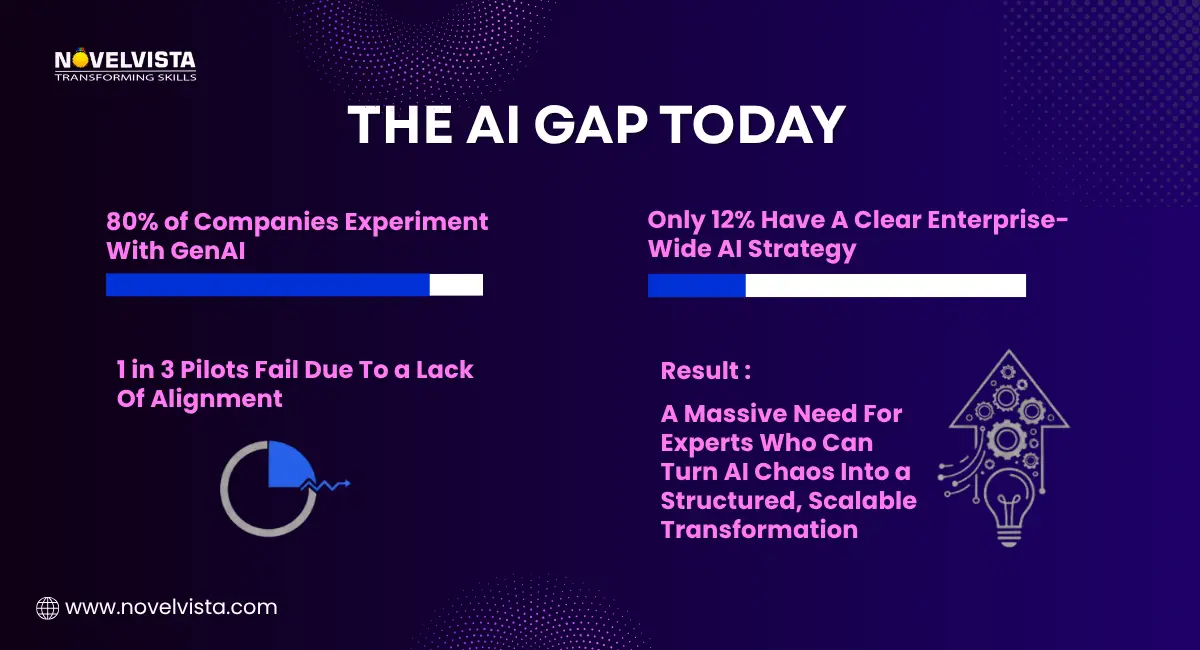
Generative AI Strategist Career Path
The generative AI strategist career path is flexible and attracts talent from many domains—consulting, analytics, product, IT architecture, marketing, and digital transformation. What matters most is the ability to blend strategic thinking with AI literacy.
A common progression looks like this:
-
Start in roles such as analyst, consultant, product owner, project manager, or technologist, where you gain exposure to business and technology.
-
Participate in AI-related initiatives—use-case scoping, automation pilots, workflow redesign, or digital transformation projects.
-
Build AI expertise through hands-on tools, certifications, and real-world experience. This reinforces the educational background for AI strategist requirements.
-
Transition into formal AI strategy roles within AI Centers of Excellence, digital transformation teams, or enterprise AI offices.
-
With experience, grow into leadership positions like Head of AI Strategy, Director of AI Transformation, or Chief AI Officer.
This career path is expanding rapidly as organizations invest in AI leadership.
Future Demand
By 2030, most enterprise functions, operations, HR, finance, customer service, and product development will rely on AI foundation models. Organizations will urgently need strategists who can translate business problems into AI opportunities while guiding implementation responsibly. This makes the generative AI strategist career path one of the most future-proof and impactful choices today.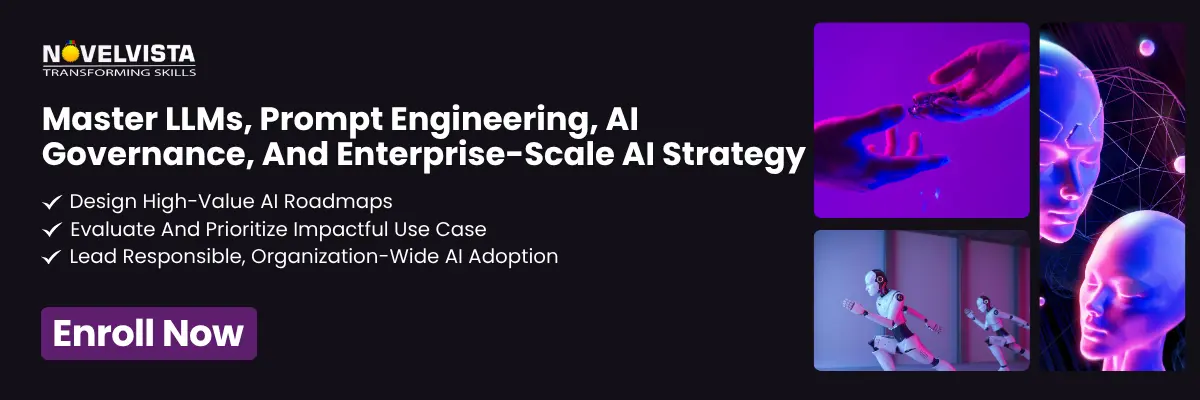
Conclusion
A generative AI strategist is far more than a technology expert; they are architects of digital transformation. They help organizations decide where AI fits, how it should be deployed, and how risks should be managed. As AI moves from experimentation to enterprise-wide integration, the role will shape how businesses innovate, compete, and operate. If you want a strategic, high-impact, future-ready career, it is one of the smartest moves you can make today.
Ready to upgrade your skills and move closer to becoming a generative AI strategist?
Join NovelVista’s Generative AI Professional Training and gain practical, industry-ready skills in LLMs, prompt engineering, AI governance, use-case selection, and real-world implementation frameworks. Designed for aspiring AI strategists, digital leaders, and innovation-focused professionals, this course empowers you to confidently define AI roadmaps, align technology with business outcomes, and lead responsible AI adoption across your organization.
Start your Generative AI Strategist journey today!
Frequently Asked Questions
Author Details

Akshad Modi
AI Architect
An AI Architect plays a crucial role in designing scalable AI solutions, integrating machine learning and advanced technologies to solve business challenges and drive innovation in digital transformation strategies.
Course Related To This blog
Generative AI Professional
Generative AI in Project Management
Generative AI in Risk & Compliance
Generative AI in Retail
Generative AI in Marketing
Generative AI in Finance and Banking
Generative AI for HR and L&D
Generative AI in Cybersecurity
Generative AI in Business
Generative AI in Software Development
Confused About Certification?
Get Free Consultation Call


